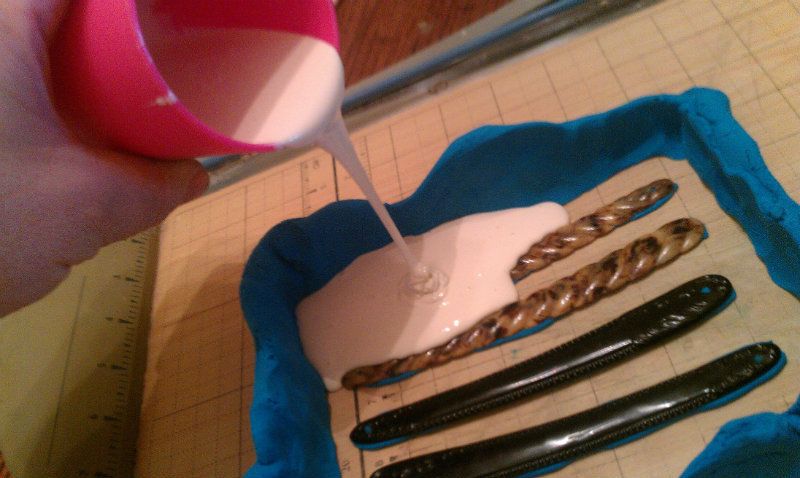Results 1 to 9 of 9
Thread: Tutorial: Casting Resin Scales
Threaded View
-
08-27-2012, 05:45 AM #1
 Tutorial: Casting Resin Scales
Tutorial: Casting Resin Scales
By request, I'm posting how I cast up some resin scales.
Part I: Making a Mold
The first thing to do is to find some nice donor scales. The ideal scales don't have warps since every copy you make will also have the same warp. Here's mine:

The next thing we need to do is to seal the scales to a flat surface. Ideally, you'll want to use a hot glue gun, but you risk breaking your scales when you're retrieving your originals. Here, I've used the included modeling clay in the Alumilite Super Casting Kit. I used a bit of clay on the bottoms of the scales and mounted them to my flat surface and then used the remaining clay to build walls around my project. My daughter wanted me to cast up one of her little toys at the same time, but since I was running low on silicone rubber material, I had to pull the toy out of the final.

For this project, I'm using RTV (room temperature vulcanizing) silicone rubber to make my mold. It comes in two parts...a base and catalyst.

I mixed up four ounces of the RTV into a third cup and SLOWLY began to pour up the mold. Going too fast will allow bubbles to get trapped in your mold and at that point, you'll have to start over or you'll have to do some blending and sanding with each pour.


From here, you need to walk away for about eight hours to let the RTV do its thing. When the RTV is good and solid, carefully take off your retaining walls, trim the edges, and clean up. One thing worth mentioning is that your new mold has to carefully examined for undercuts that can trap air in your pours. These can be carefully removed using a sharp knife.
My finished mold:

That's it, you are now ready to start casting your own duplicate scales.
Part II will cover the rest and will be posted a bit later...
-
The Following 13 Users Say Thank You to red96ta For This Useful Post:
baldy (08-27-2012), BobH (08-27-2012), Cangooner (08-27-2012), Chevhead (04-05-2013), dinnermint (07-05-2016), Geezer (12-08-2012), Hirlau (02-19-2016), HNSB (08-27-2012), onimaru55 (08-27-2012), shutterbug (08-27-2012), spazola (08-27-2012), str8fencer (08-27-2012), WhiteLion (12-10-2012)


 14Likes
14Likes LinkBack URL
LinkBack URL About LinkBacks
About LinkBacks






 Reply With Quote
Reply With Quote